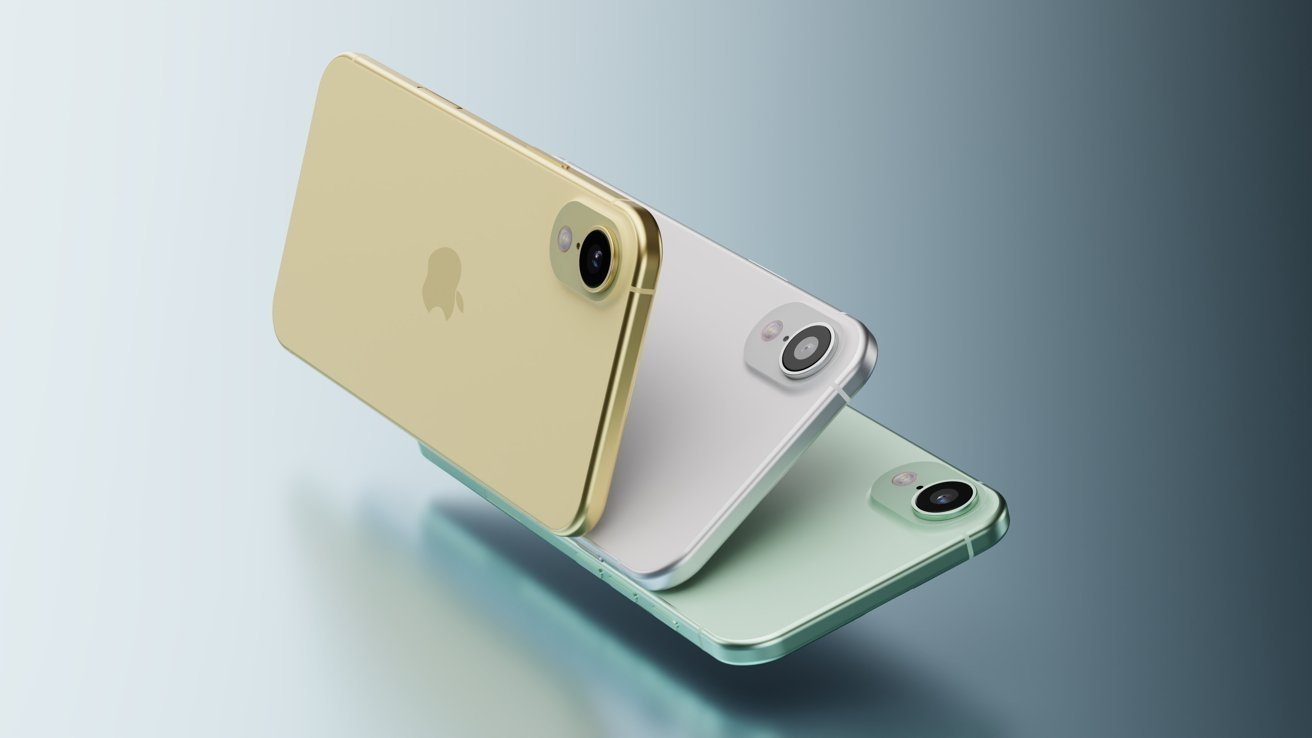iPhone 17 Air will have design compromises, but also will debut many engineering changes
The iPhone 17 Air will herald the start of a new iPhone engineering ethos at Apple, with Apple said to have pulled off a herculean effort to come up with its design.

A render of what the iPhone 17 Air could look like
The 2025 iPhone lineup is expected to include quite a few changes. Alongside a radical iPhone 17 Pro camera bump alteration, speculation is that Apple will be bringing out hardware referred to as the iPhone 17 Air or iPhone 17 Slim.
In Sunday's newsletter for Bloomberg, Mark Gurman writes about the model's details, including how it won't look that different from a standard model when viewed from the front. It will have a 6.6-inch display with slim borders and ProMotion, as well as the Dynamic Island at the top.
The 6.6-inch claim is about the same as others about the screen, with the size ranging from 6.55 inches to 6.7 inches, depending on the rumor source.
The side will even have things like the Camera Control button, but there won't be that much space for it. The depth reduction is said to be about 2 millimeters, making it about a fifth thinner than the current-gen iPhone 16 range.
Making a smaller smartphone required Apple to go back to the drawing board to avoid making too many compromises. That resulted in engineering changes to the display, battery, and even silicon elements, to make it fit.
Not full-bore
While it tried to avoid them, Apple still had to make some choices that marginally reduced the iPhone 17 Air's capabilities. This includes switching to a single 48-megapixel camera on the back, similar to the iPhone 16e.
Though the iPhone range hasn't had a physical SIM card slot for a while in the United States, the new design will also lose the component in other markets. This was previously reportedon, but reaffirmed by Gurman in his report.
Though the drawbacks of the redesign are a problem for the slimmest on-the-way model, it also brings with it some benefits. For example, Gurman believes that the model will use the C1 modem, Apple's in-house design that will save power, but loses out on mmWave 5G support.
The new model will also apparently represent a sea change for Apple, and some technologies made for the Air will apparently be incorporated into future releases, like the long-rumored iPhone Fold.
Rumor Score: Possible
Read on AppleInsider

Comments
SO.. the replacement for the Plus is a phone with essentially the same size screen, but it now has a stripped out feature set: only one camera lens, no fast mmWave 5G (which now blankets big cities), almost certainly reduced battery life vs. the Plus AND... the icing on the cake... it will be more expensive than the Plus! And what is the big selling point that will justify to buyers this reduced feature set with shorter battery life at more expensive prices than a phone that Apple buyers have allegedly already rejected? It might be up to 2mm thinner... that's maybe a 20% slimmer phone. Spare me the comparisons to the Macbook Air introduction -- there is no magical "pulling a laptop from a manila envelope" moment that's going to happen. This will be, "Hey, if you look at the phone from the side you can see that the Slim is a little thinner than the Plus." If you doubt that this difference is as unimpressive as I'm saying, go look at Samsung's photos for its upcoming Galaxy Edge, which is practically a dupe for the rumored dimensions for the Slim, but will beat the Slim to market by several months. Is the side profile slimmer than the regular Galaxy S25? No doubt. Impressively so? Meh. You'll also note that the Edge will have two camera lenses, not one like the Slim.
Once Apple gets past the initial wave of buyers who simply like owning the latest, especially when its form factor identifies it as such, who is the iPhone Slim for? Certainly not Pro buyers since the main differentiator for Pro and Pro Max phones is their camera system. Does Apple think buyers who rejected the $100 upcharge for the iPhone Plus are going to embrace a phone with fewer features and a worse battery life for even more money because it's thinner? Good luck with that! This is a phone for nobody or, to be fair, it's for a niche that's going to be far smaller than the niches that existed for the iPhone Mini and Plus, a niche that's willing to pay more for *maybe* 2 millimeters of added thinness at the cost of features and battery life. So what is the point of this exercise in thinness to pursue a market that's smaller than the one for the phone you're replacing? That said, I really do hope that Apple will surprise us in some great way with the iPhone Slim that they've managed to keep secret from the rumor mill. Apple and the iPhone lineup, in particular, could really use a moment like that.